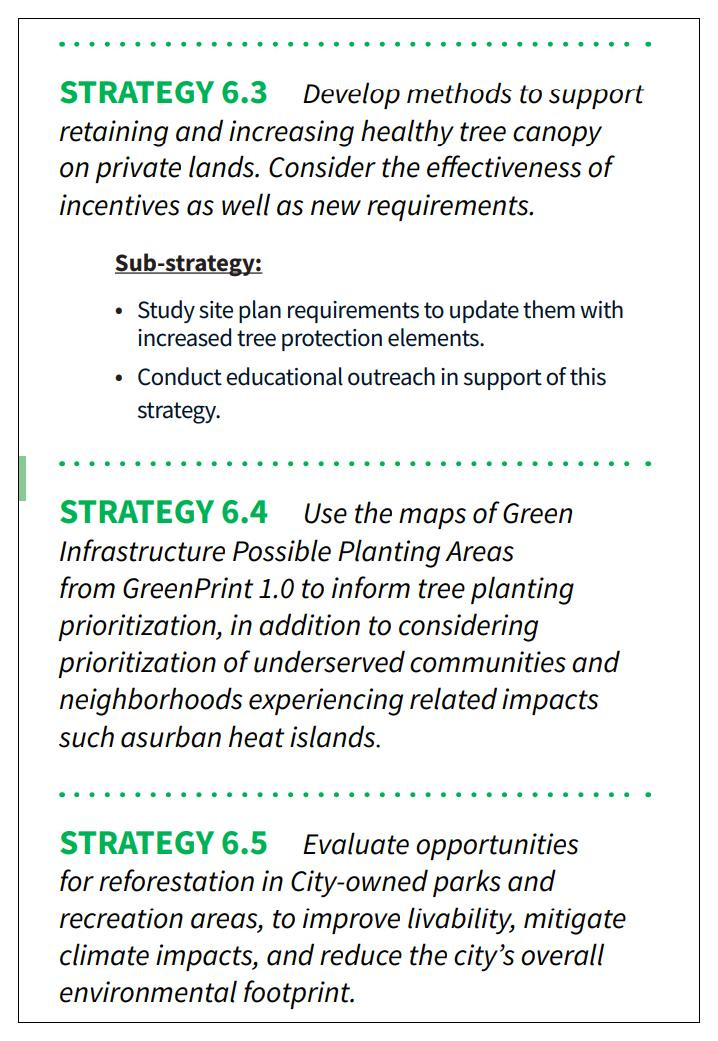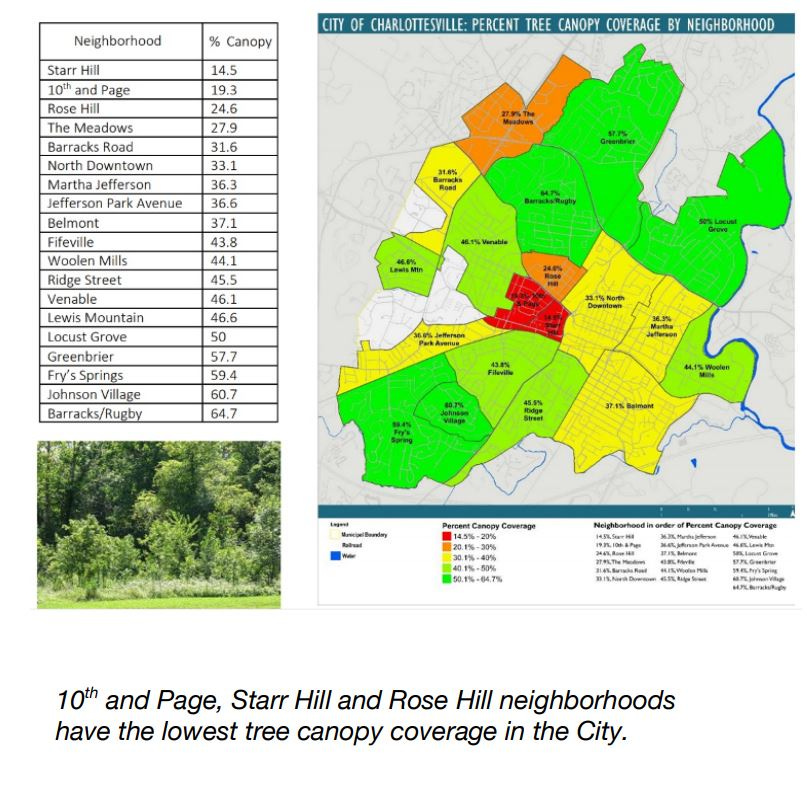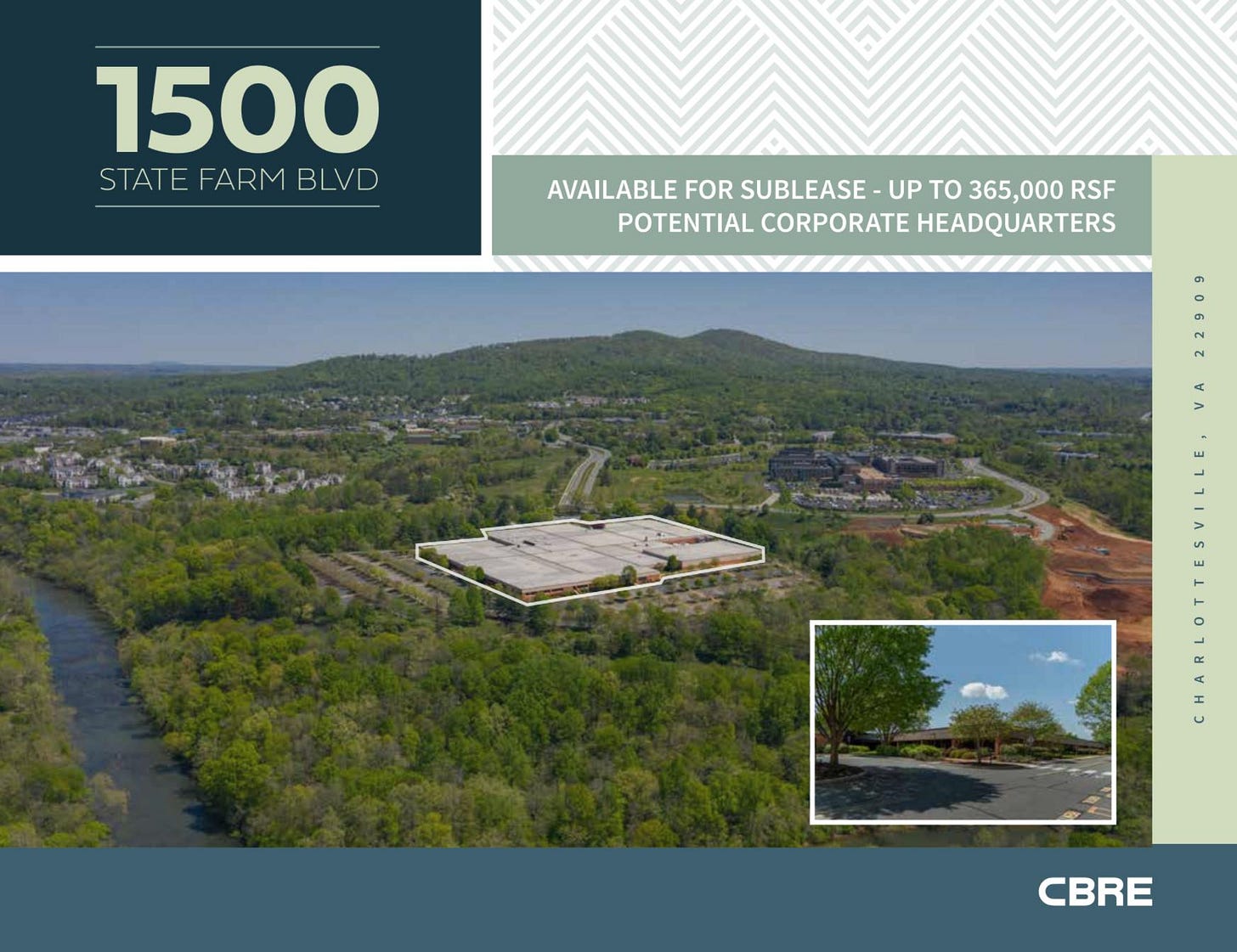In today’s subscriber-supported public service announcement, the Charlottesville Area Tree Stewards continues to offer classes and events this fall and winter to increase your awareness of our wooden neighbors and to prepare for the future. On October 19, there’s a free class on the Selection, Planting, and Care of Trees from 7 p.m. to 8:30 p.m. (register) In early November, there is a three part class on Winter Invasive Plant Identification and Treatment. Information on all the classes and the group can be found at www.charlottesvilleareatreestewards.org.
On today’s show:
The Charlottesville Planning Commission recommends approval of the update of the Charlottesville Comprehensive Plan
A start-up seeking sugar substitutes secures funding for expansion at the State Farm Building
The Charlottesville Tree Commission looks forward to the future and a little ReLeaf
We begin today with an economic development announcement in Albemarle County. Specifically at the former regional headquarters for State Farm on Pantops. Governor Ralph Northam was on hand to announce that the firm Bonumose will partner with the Hershey Company to research and develop reduced or zero sugar chocolate.
“This is a $28 million investment that Bonumose is putting forth in the Commonwealth of Virginia,” Northam said.
Ed Rogers is the chief executive officer and co-founder of Bonumose, which was formed in 2016 and currently operates out of the University of Virginia’s North Fork research park.
Using a $256,000 grant from the Commonwealth’s Opportunity Fund and $300,000 from the Virginia Investment Performance Grant program, Bonumose will move to a portion of the State Farm site.
“It’s an important milestone, 36,000 square foot building,” Rogers said.
Bonumose is betting that its technology can provide a healthy sugar substitute that can be produced at a price that can be affordable. Rogers said there’s a lot of hard work to do to prove that the tech will pay off.
“We are not so full of hubris that we think that’s going to be easy,” Rogers said. “I mean, sugar is great. Who doesn’t love sugar? I mean even if you hate sugar, you probably love sugar also. It’s the gold standard of sweeteners. It’s natural. It tastes great. It is functional. It provides structure to foods. It helps depress the freezing point so you have creamy ice cream. It caramelizes. It does all of these things in food so when you’re talking about replacing sugar, it’s just not a matter of replacing the sweetness.”
Current sugar substitutes do not work as well in cooking, and can be much more expensive than the real thing. Rogers said the product Bonumose will make s based on tagatose, a naturally occurring sweetener.
The Pantops facility will serve as a demonstration project and will provide at least 64 new jobs. Rogers said this only came about because the county’s Economic Development office approached the company with options on how to expand. Soon after the pandemic, State Farm said they would shift entirely to a teleworking model and would not return to the 365,000 square foot building.
Economic Development Director Roger Johnson is fond of using code names for various projects that they are working on before the deals can be announced.
“Albemarle County had begun working with Bonumose well before the state die and we named this project internally Project Leopard, after Def Leppard’s hit song Pour Some Sugar On Me,” Johnson said.
This is a story I’ll continue to monitor in the weeks, months, and years to come.
New grant program
The City of Charlottesville has launched a new grant program intended to encourage job creation. The GO Hire program run by the Office of Economic Development will be adapted as part of the city’s pandemic recovery efforts. The position must pay $15 an hour. (learn more)
“Grant funds can be used for City based businesses hiring a new employee that is a City resident,” reads the application for the program. “[The Office of Economic Development] will reimburse 50 percent of the wages for the initial eight week hiring period.”
Grants are capped at $5,000, but the positions are eligible for the Virginia Return to Earn Initiative operated by Virginia Career Works.
Comprehensive Plan milestone achieved
After four years and ten months of review, the seven member Charlottesville Planning Commission has voted unanimously to recommend approval of an updated Comprehensive Plan as well as the Future Land Use Map. They did so after a long public hearing in which dozens of community members spoke about the plan, which has been drafted by the firm Rhodeside & Harwell as part of the Cville Plans Together initiative.
James Freas has only been Charlottesville’s director of Neighborhood Development Services for one month, but had the honor of introducing the public hearing.
“The result of this process to date is the draft plan that you have before you tonight which is itself only a first step as we move on to the implementation actions and rulemaking through the zoning ordinance project,” Freas said.
That’s the third step in the Cville Plans Together project, but Freas said the Planning Commission had to take into consideration all of the chapters of the Comprehensive Plan.
“As we move into implementation, we will be considering this entire plan,” Freas said. “While there has been discussion of the land use map, the strategies in this plan call for environmental protection, historic preservation, recognition of neighborhood context, addressing climate change, and providing affordable housing among many other issues and all of these will go into crafting a new zoning ordinance.”
Freas said that densities called for in the future map may be adjusted in places where it is not suitable. He said he is excited to join the team just as this next phase gets underway.
Update on Climate Action Plan
After a presentation on the plan, Commissioners got the chance to ask questions before the public hearing began. One yielded an update on the Climate Action Plan from Kristel Riddervold, the city’s environmental sustainability and facilities development manager.
“There’s been sort of some competing priorities that the city has worked on and so we have in some ways given some deference to the comp plan process,” Riddervold said. “There’s been a lot of ground work and climate protection related supporting work that’s been going on for the past year. There is still fully a commitment to develop a climate action plan because that is consistent with Council’s commitment with the Compact of Mayors.”
Bill Palmer works in the Office of the Architect at the University of Virginia. He said he supported goals in the draft Comprehensive Plan that refer to the role UVA plays in the community.
“And the acknowledgement of UVA’s influence on many aspect of Charlottesville both positive and negative,” Palmer said. “I think continuing the collaboration and cooperation between the city and University is very important and [Albemarle] County as well.”
Public hearing
The public hearing lasted nearly two hours and featured competing visions. Some are concerned that additional density in the map could worsen the phenomenon of gentrification.
“The process that got us to this point has been incredibly flawed and is now barreling toward a forced premature conclusion,” said Julia Whiting.
One former Planning Commissioner agreed with that sentiment.
“It feels like we’re driving drunk at night,” said Bill Emory. “Kind-hearted developers will not address our shortage of affordable housing.
Third-year UVA student Chloe Estrada said she supports a plan which will hold landlords accountable.
“Earlier this year, we conducted a survey of students who have lived off-Grounds to learn more about their housing experiences with specific regard to treatment they have received from landlords,” Estrada said. “Broadly, only 43 percent of student renters were satisfied with their off Grounds housing experience.”
One supporter of the plan wanted the implementation phase to begin quickly.
“I recommend that you not slow down the process and that you go ahead and adopt this map as a guide for creating new zoning,” said Kathryn Laughon. “We know that changes in status quo are going to create a lot of backlash.”
On Monday, Council and the Planning Commission held a two-hour question and answer period on the plan. Kevin Hildebrand had listened and it cleared up one aspect of the plan.
“I was encouraged listening to yesterday’s meeting that the up to 12 units is not a by-right development in medium density,” Hildebrand said. “Heretofore that has not been made clear and perhaps the allowable density will be based on lot size.”
Commission review and adoption
Dozens more people spoke over the next hour or so before the Commission got to their deliberation. There were many discussions of tweaks, and quite a few amendments. Some of this came down to what language should be used. Here’s an interchange about bonus density for providing affordable housing in “sensitive” areas.

“I got a new wording,” said Commissioner Rory Stolzenberg. “Consider allowing additional units and height under a bonus program or other zoning mechanism with greater and deeper affordability than non-sensitive areas.”
“Is it ‘consider’ or just ‘allowing’ because ‘consider’ means that maybe you can, maybe you cannot,” said Commisioner Taneia Dowell. “‘Allowing sounds like something can happen.”
“I don’t think we know yet whether that it should be considered,” said Commissioner Liz Russell. “That’s I think the point.”
“In my opinion we can change it to allow and then we can figure out the number in that bonus program,” said Commissioner Karim Habbab.
Going forward, NDS Director James Freas will be leading the discussions. If this were a role-playing game, he’s sort of like the dungeon master.
“When we say consider, what we mean is that the planning board and the City Council would be the ones doing the considering at the time when you’re moving forward with the adoption of the zoning,”
Council will have to take a vote and some of the amendments suggested by the Planning Commission need to be fleshed out by the consultants with more information and specifics. Shortly before the vote, NDS Deputy Director Missy Creasy listed four changes that would be made. One of them was the language we just heard.
Here is another:
“Require that zoning changes preserve and enhance historic and cultural resources,” Creasy said.
Another is to further outline what is meant by a “sensitive” area.
“And number four, recommend that sensitive area delineation should continue to be defined and additional means and metrics beyond Census block data need to be considered,” Creasy said.
The next step will be the first reading by City Council, scheduled for November 15.

In today’s second Substack-fueled shout-out, Code for Charlottesville is seeking volunteers with tech, data, design, and research skills to work on community service projects. Founded in September 2019, Code for Charlottesville has worked on projects with the Legal Aid Justice Center, the Charlottesville Fire Department, and the Charlottesville Office of Human Rights. Visit codeforcville.org to learn about those projects.
While Charlottesville does not yet have a specific Climate Adaptation Plan, the draft Comprehensive Plan has several references to the importance of trees to the city’s overall goals. In 2015, a measurement found that the city’s tree canopy was at 45 percent of the land cover. The 2021 draft Comprehensive Plan features more calls for preservation requirements including Goal 6 of the Environment, Climate, and Food Equity chapter which includes many strategies for increasing tree canopy, especially in areas that experience the urban heat island effect due to a lack of shade.
“The Comprehensive Plan when it is finally done is going to have significant statements about supporting trees, adding trees, and the environmental health of the city,” said Planning Commissioner Jody Lahendro at the October 5 meeting of the Tree Commission.
The Tree Commission was created in 2010 to advocate for those types of policies, and to recognize specific trees. At the beginning of their meeting on October 5, Chair Brian Menard noted that a landmark tree in Maplewood Cemetery crashed to the ground the weekend before.
“There is significant damage to the fabric of the cemetery,” Menard said. “There are a lot of stones damaged, some surely beyond repair.”
Menard said the sudden death of the tree has caused an impact and points to the importance of celebrating trees.
“Just watching people through the neighborhood react to this, it reminds me that for the last year or so we have especially stressed the functional benefits of trees, the health benefits, the environmental benefits,” Menard said.
To help with education about those benefits, a group called Charlottesville ReLeaf has formed to lead efforts to help spread the word and to plant trees in strategic areas. Peggy Van Yahres is one of its members. (learn more)
“What we want to do is get kids and families excited about trees and the green industry, so we’re really starting with some educational events,” Van Yahres said.
Van Yahres said the group is working on developing a website. One idea is to develop materials that can demonstrate the heat differences between different playgrounds. The one at Venable Elementary features a bit of shade, whereas most others do not.
Menard said the Tree Commission should be playing a role in making sure that new public projects will include new trees.
“We need to know who and where and when plans are being made to make changes to city property so that we’re in early enough on the conversation,” Menard said. “So whether that is with Public Works or with the school division or whoever.”
The Tree Commission also got an update on municipal tree planting on public property. The current capital improvement program has set aside $75,000 for that purpose. Mike Ronaybe is the city’s arborist and he said staff needs to be in place to do the planting and to make sure planted trees are regularly watered.
“We usually hire 17 seasonals that work at parks in the summertime,” Ronayne said. “I think we are able to fill three of those positions so that’s just seasonal staff. Our full-time staff we’re down about a third from where we need to be for full-time positions.”
In the 2020 State of the Forest report, Ronayne stated there is a city planting goal of 200 trees a year, but that has not been met for four years. The Tree Commission discussed ways to encourage other ways to help meet the goal.

Special announcement! Today’s the third day of a new promo with Ting! Are you interested in fast internet? Visit this site and enter your address to see if you can get service through Ting. If you decide to proceed to make the switch, you’ll get:
Free installation
Second month of Ting service for free
A $75 gift card to the Downtown Mall

















Share this post